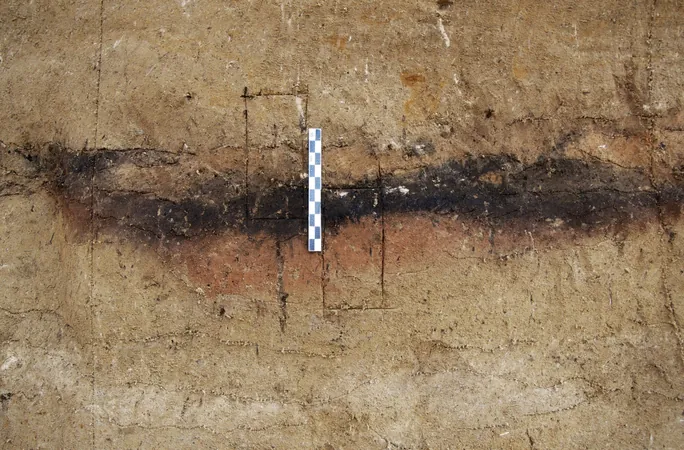
Unveiling the Secrets of Ice Age Fire: How Our Ancestors Mastered Pyrotechnology
2025-04-14
Author: Emily
The Vital Role of Fire in Ice Age Survival
Fire was more than just a mere convenience for Ice Age humans; it was a lifeline. From cooking and heating to providing light and crafting tools, it played a pivotal role in their survival amid the harsh conditions of the Ice Age.
A Groundbreaking Study Reveals New Insights
A team of trailblazing scientists from the University of Algarve and the University of Vienna has cracked the code on the enigmatic use of fire during this frigid epoch. Their groundbreaking research unveiled three ancient hearths at a Ukrainian prehistoric site, revealing that these early humans employed a variety of fuel sources, predominantly wood, alongside potential bones and fats, to stoke their fires. The fascinating results have been published in the journal Geoarchaeology.
Fire: A Multi-Faceted Tool
The study highlights how Homo sapiens, during the Upper Paleolithic era (45,000 to 10,000 years ago), harnessed fire for diverse purposes. Lead author Philip R. Nigst, an archaeologist at the University of Vienna, emphasizes, "Fire transcended mere warmth; it catalyzed cooking, tool-making, and social interactions among groups."
The Mystery of Scarce Evidence
Despite the acknowledged importance of fire, tangible evidence of its use from the coldest segment of the Ice Age—between 26,500 and 19,000 years ago—remains frustratingly rare in Europe. Study author William Murphree underscores this anomaly: "While fire usage was evident before and after, we lack substantial evidence from this critical period."
Innovative Techniques Illuminate the Past
Utilizing advanced geoarchaeological methods, the research team examined the intricate details of the three hearths. Techniques like microstratigraphic and micromorphological analyses revealed that these wood-fired fireplaces reached scorching temperatures exceeding 600°C, showcasing a remarkable mastery of pyrotechnology—even amid extreme environmental challenges.
Fuel Sources and Heating Mastery
The analysis revealed a striking preference for wood, specifically spruce. Yet, intriguing hints suggest that bones or fats might have supplemented the fuel supply. As zooarchaeologist Marjolein D. Bosch explains, some animal bones discovered at the site endured burns exceeding 650°C—sparking queries about whether they served as fuel or were simply caught in the flames.
Seasonal Adaptations and User Expertise
All three hearths were simplistic and open, yet they hint at sophisticated usage patterns. The variations imply that early humans adjusted their fire use seasonally, with one larger, thicker hearth suggesting elevated temperatures for specific needs. Nigst elaborates, "These hunter-gatherers exhibited exceptional control over fire, adapting its use based on varying purposes throughout their seasonal migrations."
Lingering Questions About Fire Usage
Despite these revelations, the scarcity of fireplaces from the Last Glacial Maximum poses persistent questions. Murphree wonders, "Could the evidence have been obliterated by the soil's cyclical freeze-thaw patterns inherent to the Ice Age?" Meanwhile, Nigst speculates, "Was there a lack of fuel during this peak ice period, leading to alternative survival strategies?" The quest for answers continues, illuminating the complexities of early human ingenuity.









 Brasil (PT)
Brasil (PT)
 Canada (EN)
Canada (EN)
 Chile (ES)
Chile (ES)
 Česko (CS)
Česko (CS)
 대한민국 (KO)
대한민국 (KO)
 España (ES)
España (ES)
 France (FR)
France (FR)
 Hong Kong (EN)
Hong Kong (EN)
 Italia (IT)
Italia (IT)
 日本 (JA)
日本 (JA)
 Magyarország (HU)
Magyarország (HU)
 Norge (NO)
Norge (NO)
 Polska (PL)
Polska (PL)
 Schweiz (DE)
Schweiz (DE)
 Singapore (EN)
Singapore (EN)
 Sverige (SV)
Sverige (SV)
 Suomi (FI)
Suomi (FI)
 Türkiye (TR)
Türkiye (TR)
 الإمارات العربية المتحدة (AR)
الإمارات العربية المتحدة (AR)